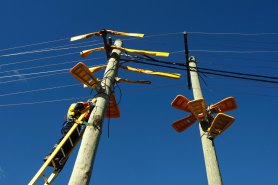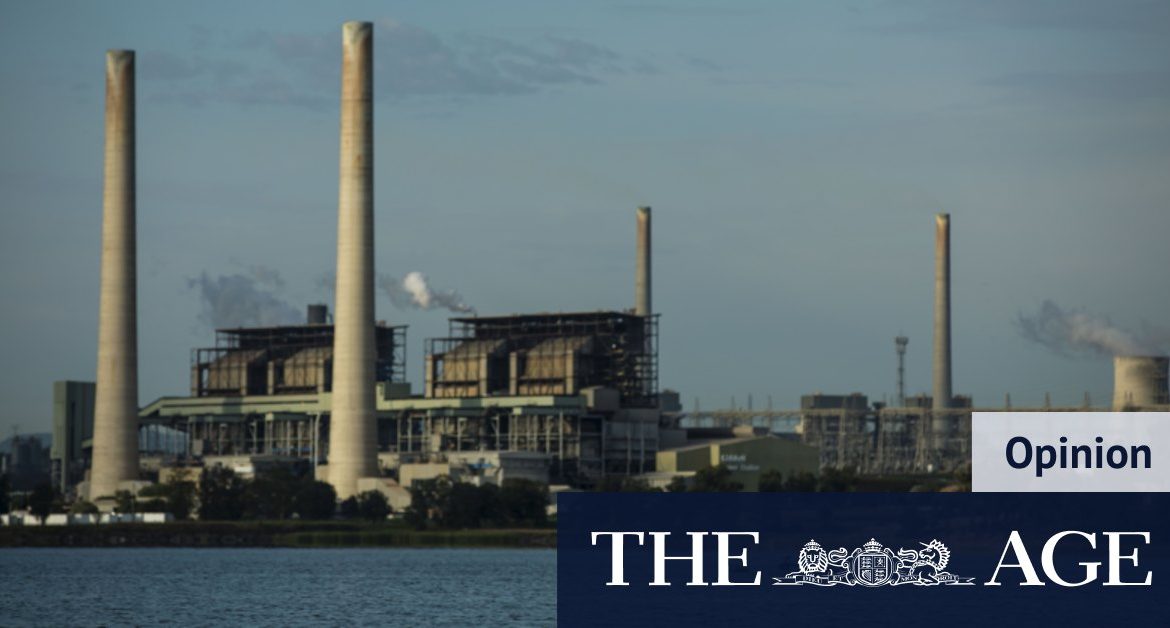This is a painful write-down for AGL’s shareholders and one which the subsequent share price movement suggests they had not fully anticipated. Painful though it is, it is likely to be just the beginning of the pain that new renewable electricity generators have in store for the old fossil fuel generators.
For too long Australia’s electricity consumers have been held hostage by a fossil fuel-dominated oligopoly that has sought (and mostly so far succeeded) in protecting its legacy fossil fuel positions by going slow on the development of cheaper renewable alternatives. As a result, while about 20 per cent of Australia’s electricity now comes from the wind and sun, only 8 per cent of the electricity that AGL sells comes from these sources.
AGL customers almost certainly produce more solar energy using panels on their roofs than the company does.Credit:Sydney Morning Herald
AGL’s own customers almost certainly produce far more electricity from solar panels on the roofs of their homes and businesses than AGL does from the small amount of solar generation it owns or contracts.
The write-downs are the first substantive indication that Australia’s big fossil fuel electricity generators are feeling the heat that their peers in other rich countries have long had to face.
There is an important lesson here for Australia’s competition policy. It should not be forgotten that the Australian Competition and Consumer Commission has long opposed the dominant position that AGL built up in coal generation. The ACCC was also not shy in drawing attention to the inadequacy of competition in electricity supply when its earlier concerns were borne out in due course.
The ACCC’s objections were repeatedly overruled on appeal by AGL, and it is not hard to imagine that many in government (and in Australia’s energy administrative institutions) were sympathetic to AGL. Where competition policy has failed, technology change is succeeding in bringing about better outcomes for consumers.

A big task lies ahead in rebuilding the electricity industry.Credit:Louise Kennerley
There are also important lessons here for the long standing struggle between the Australian and state governments for dominance in energy policy. Recent Australian governments have been frustrated by the inadequacy of competition in electricity production. But the federal government’s stout refusal to prioritise the reduction of greenhouse gas emissions has meant that it has undermined the one easy option – the expansion of renewable generation – that could be relied upon to stimulate competition and reduce prices.
By contrast, the NSW government, like other state governments, has embraced renewable electricity as a source of cheap electricity and obviously also, of clean energy. The NSW government’s commitment to the rapid expansion of renewable electricity generation to be delivered in a way that would undermine the oligopoly has been bitterly opposed by AGL and its fossil fuel-dominated peers. It can be no surprise that many in the oligopoly lose no chance to voice their preference for national, rather than state, energy policy.
Loading
The write-downs suggests that AGL and it coal-dominated peers are conceding defeat in these struggles, for now at least. But this is not the time to gloat. A very big task lies ahead in rebuilding the electricity industry and its administrative institutions to make the most of the opportunity that renewable generation offers for clean energy, and if well handled, also cheap energy.
Bruce Mountain is the director of the Victoria Energy Policy Centre at Victoria University.
Most Viewed in Politics
Loading







